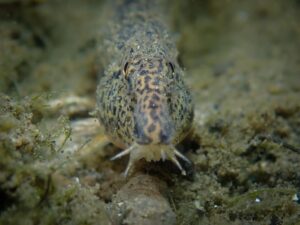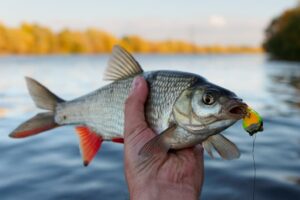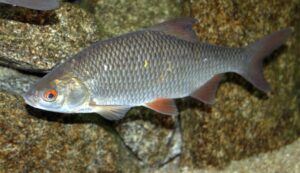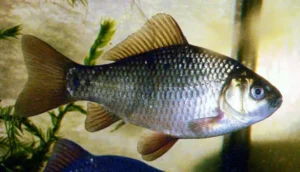Panfish: Gudgeon (Gobio Gobio): An In-depth Description For Freshwater Fishing Enthusiasts
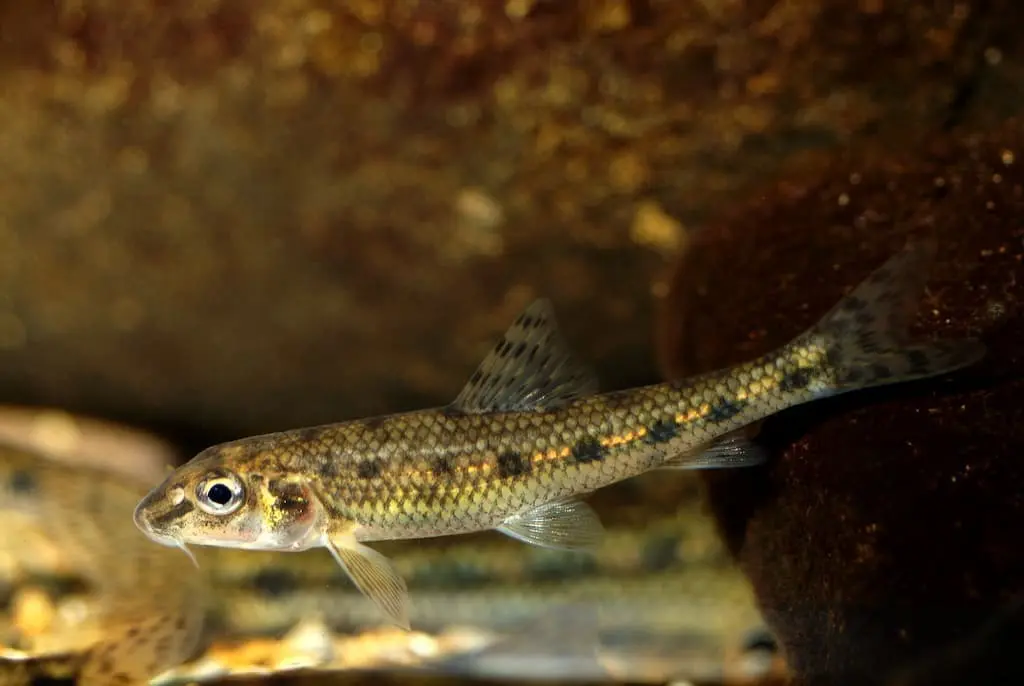
Fishing enthusiasts often seek to expand their knowledge, particularly about freshwater species. One such fascinating creature is the Gudgeon (Gobio Gobio), a small fish native to Europe’s pristine rivers and lakes.
In this blog post, we’ll unpack everything you need to know about these remarkable creatures – from their physical attributes and behaviours to why they’re revered as crucial water quality indicators.
Intrigued? Let’s dive in!
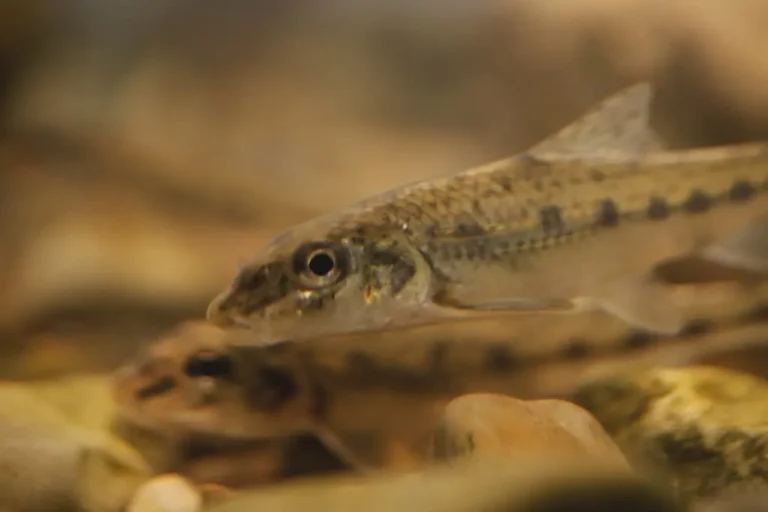
The Gudgeon (Gobio Gobio): A Freshwater Fish Found in Europe
The Gudgeon (Gobio Gobio) is a freshwater fish species that can be found in various habitats across Europe.
Habitat and Distribution
Gudgeon fish find their homes primarily in the freshwater bodies of Europe. These native species gravitate towards rivers, ponds and lakes with sandy or gravelly floors where they form schools of hundreds, sometimes even thousands.
Countries like Belgium, France, Switzerland and Luxembourg boast abundant populations of this resilient type. Despite their widespread distribution across the continent and plentiful presence, gudgeons have faced significant population decline triggered by pollution and disturbances in aquatic ecosystems.
Today’s Gudgeon fish may not enjoy such luxuriant numbers without your help to protect these pristine watery habitats.
Physical Description
The Gudgeon (Gobio gobio) boasts an elongated, cylindrical body that spans between 5 and 10 cm. This freshwater fish sports a unique brownish-green shade punctuated by dark vertical stripes, enhancing its aquatic appeal.
Underneath its massive head lies a mouth positioned lower with two pairs of barbels peeking out. You’ll also notice the flat belly it carries beneath its robust frame. Adding more character to this European wonder are fins speckled black.
While their average size hovers around 10 cm and weight at about 20 g, larger individuals can stretch up to an impressive length of 20 cm weighing in at approximately150 g – quite a sight for any angler or fishing enthusiast!
| Class |
| Actinopterygii |
| Order |
| Cypriniformes |
| Family |
| Cyprinidae |
| Genus |
| Gobio |
| Species |
| G. gobio |
| Binomial Name |
| Gobio gobio (Linnaeus, 1758) |
Diet and Behavior
The Gudgeon thrives on a benthic carnivorous diet, similar to other freshwater fish found in Europe. They dive to the bottom of bodies of water, hunting for aquatic insects, small organisms including worms and mollusks.
These small crustaceans and insect larvae become a crucial part of their feeding routine.
During the spawning season between May and June, Gudgeon behavior undergoes significant changes. Females lay approximately 1000 eggs which stick onto aquatic plants or stones on the river bed creating an intriguing spectacle for anglers interested in their lifecycle.
Incubation period falls within two to four weeks before these eggs hatch into young Gudgeons ready to explore their pristine waters.
Importance of the Gudgeon as a Bio-indicator
The Gudgeon is an important bio-indicator in freshwater ecosystems, serving as a key indicator of water quality and the overall health of the environment.
Water Quality Indicator
Gudgeons play a crucial role as bio-indicators in aquatic ecosystems. Their sensitivity to pollution, coupled with their widespread presence, makes them valuable for water quality assessment.
Like the chabot fish, Gudgeons can offer early warnings about environmental degradation or disturbances within these vital habitats. They thrive in pristine water conditions and suffer when those conditions deteriorate due to human activities or natural disasters.
Should you spot an abundant population of Gudgeon during your fishing trips, it’s typically a positive sign that the water body is healthy and undisturbed. On the flip side, dwindling numbers could signal potential issues with the quality of water in the area.
Sensitivity to Pollution
Pollution holds a significant threat to the survival of Gudgeon. These freshwater fish demand pristine waters and are highly sensitive to water pollution, making them reliable bio-indicators in aquatic ecosystems.
Environmental health greatly affects their thriving populations, as they can’t tolerate dirty or contaminated surroundings. This heightened sensitivity adds value to them beyond angling pursuits – their presence signals clean water while a decline in population often suggests an increase in pollution levels.
Therefore, protecting these valuable species from pollution becomes essential not only for maintaining biodiversity but also for conserving healthy bodies of water.
Fishing for Gudgeon
When fishing for Gudgeon, try using small hooks and lightweight tackle to enhance your chances of success.
Fishing Techniques
Let’s delve into the world of gudgeon fishing.
- Use “scratch fishing” technique: This is a specialised method for catching gudgeon. Here, you fish near the bottom using light tackle.
- Employ your river abundance knowledge: Rivers often harbor high populations of gudgeon. Knowing where these fish like to hang out can help increase your catch.
- Strike a balance with your fishing gear: Heavy-duty equipment isn’t necessary for gudgeon fishing. Instead, opt for lighter gear that allows for more finesse and precision.
- Purposefully practice bottom fishing: Given that gudgeons spend most of their time near the riverbed, it’s crucial to master the art of bottom fishing to be successful consistently.
Culinary Appeal
The culinary appeal of the Gudgeon makes it a highly appreciated fish among European cuisine enthusiasts. Its dense yet tender meat cooks to perfection, offering an exciting taste and texture for those with an adventurous palate.
In some local fishing spots in Europe, anglers often prepare their catch as part of traditional recipes that incorporate various spices and herbs. For beginners looking to take up fishing, this particular species proves beginner-friendly due to its abundance and simplicity to catch.
Interestingly, the Gudgeon’s culinary value extends beyond our plates too – many fishermen use it as bait for larger predatory fish species which adds another level of utility in the angling community.
Conservation and Protection of Gudgeon
Conserving and protecting the Gudgeon is crucial due to its declining populations and its role as a bio-indicator, highlighting the importance of maintaining pristine water for all freshwater species.
Decline in Populations
Pollution and disturbances in aquatic ecosystems have had a devastating impact on Gudgeon populations. These freshwater fish are particularly sensitive to changes in water quality and can only survive in pristine environments.
Unfortunately, factors such as habitat destruction and water pollution have led to a decline in their numbers. As anglers and fishers, it is essential that we recognize the importance of conserving these vulnerable species.
By striving for cleaner waters and supporting conservation efforts, we can help protect the Gudgeon from further decline and ensure the preservation of our valuable aquatic biodiversity.
Importance of Maintaining Pristine Water
Maintaining pristine water is crucial for the survival and well-being of the Gudgeon fish. As a powerful bio-indicator, the Gudgeon relies on clean and unpolluted waters to thrive.
Pristine waters provide the necessary habitat conditions for the Gudgeon’s survival, ensuring that it can continue playing its role as an indicator of water quality. However, pollution and disturbances in aquatic ecosystems have led to a decline in Gudgeon populations, making it even more important to protect and preserve pristine water sources.
By maintaining pristine water, we not only support the survival of this species but also contribute to the overall health of our aquatic ecosystems.
Conclusion
In conclusion, the Gudgeon (Gobio Gobio) is a fascinating freshwater fish that holds great importance as a bio-indicator for water quality. Its unique physical attributes and behavior make it an interesting species to study and observe in their natural habitats.
For freshwater fishing enthusiasts, understanding the habits and preferences of the Gudgeon can greatly enhance their angling techniques and success on the water. So next time you’re out fishing, keep an eye out for this small yet significant fish!

